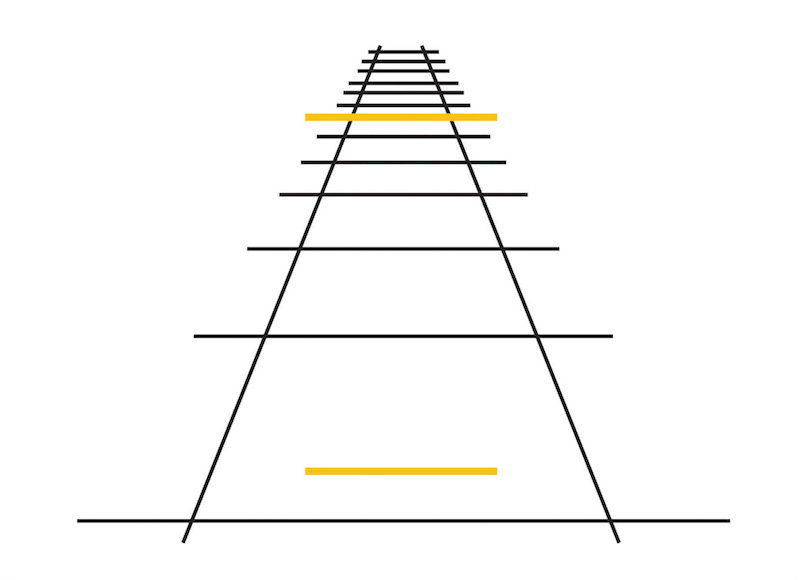
A Ponzo illusion
Looking without Perceiving, new study on autism spectrum disorder
Graduate student Tiffany Carther-Krone and professor Jonathan Marotta have shed new light on how people with autism spectrum disorders view their surrounding environment. They report their findings, alongside co-author Sarah Shomstein, in the latest edition of the journal PLOS ONE.
As the researchers write
Before becoming aware of the world around us we first need to decide the parts of our environment that we should pay attention to. This requires grouping the pieces of our visual environment together to form “the big picture” of what is happening around us.
Individuals with autism spectrum disorders (ASD) tend to focus more on the pieces of their visual environment, which may be due to difficulties putting the pieces together.
We tested this idea using a visual illusion called the Ponzo illusion, or railroad track illusion, in which two horizontal lines were placed on a background of black and white dots arranged so that, on occasion, the dots would create the illusion of two lines coming together, such as what would be seen looking down a pair of railroad tracks.
In this case, falling for the illusion would mean that an individual would indicate the horizontal line placed closest to the point where the two lines come together as longer than the other horizontal line, even though they are the same length.
Our results showed that individuals with ASD were less likely to fall for the illusion, as their line judgments were not influenced by the illusion. This suggests that individuals with ASD may have had trouble grouping the dots together to form the illusion, and may explain why individuals with ASD focus more on the pieces of their visual environment.
Research at the University of Manitoba is partially supported by funding from the Government of Canada Research Support Fund.






